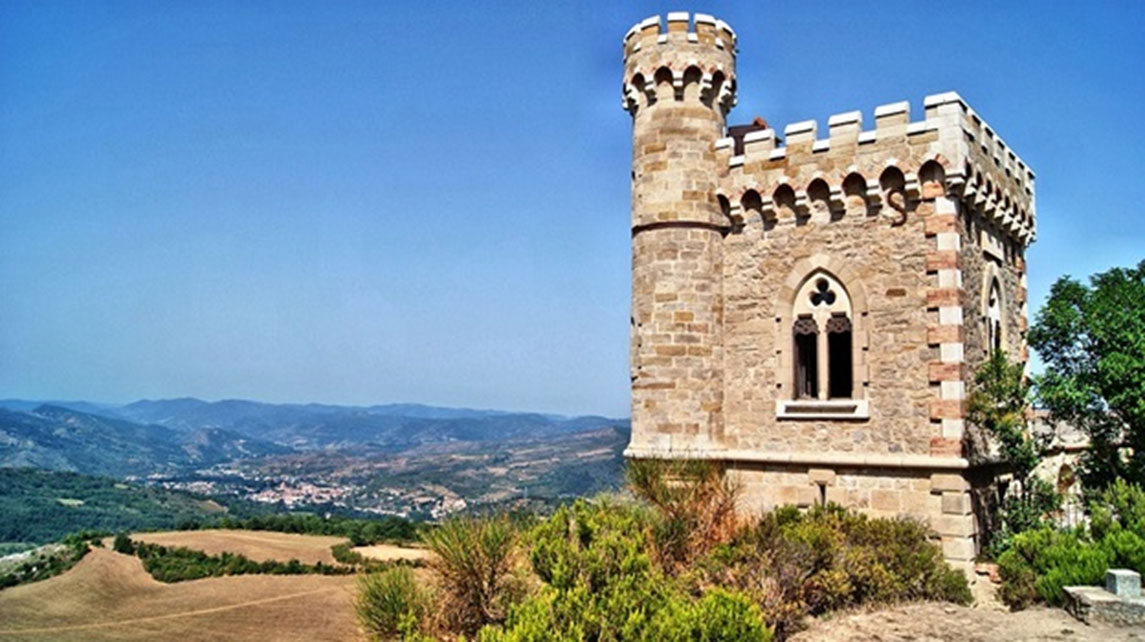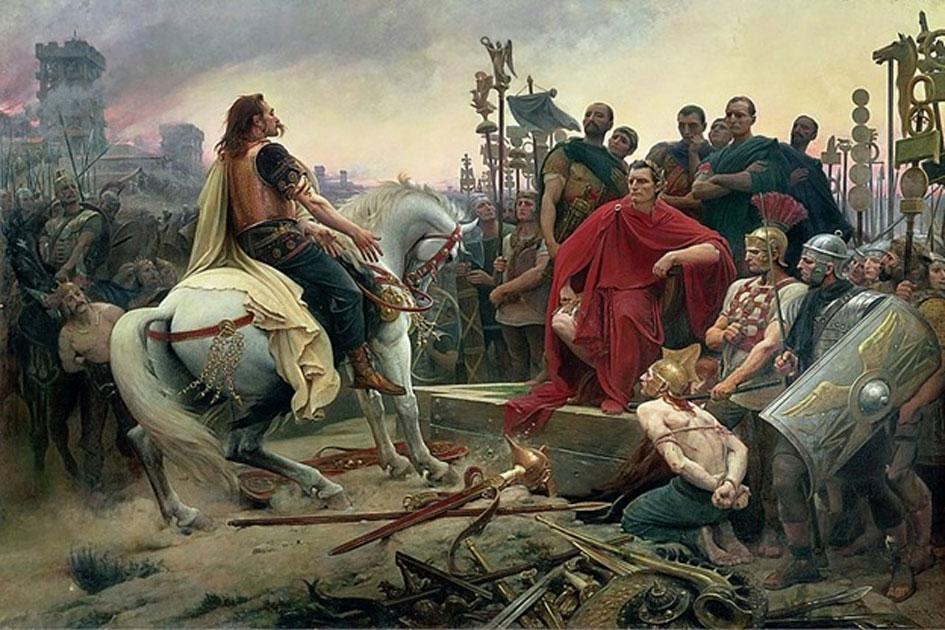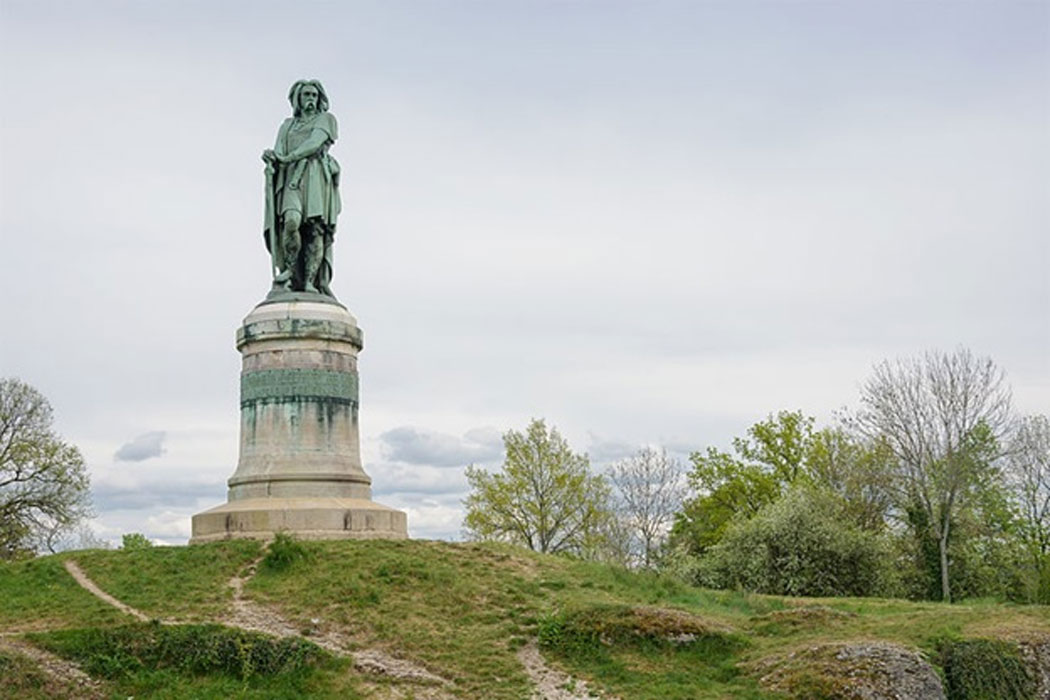
Gaul’s Solar Alignment: A Secret Deeper than Rennes-Le-Chateau
In 54 BC, the Celtic Mandubii tribe ruled by Vercingetorix capitulated to Julius Caesar and so ended Gaul’s resistance to Rome. However, was the Battle of Alesia, located in southern France actually fought at Alaise, in eastern France? Like the famous Rennes-le-Chateau, both sites share a secret of great ancient astronomical significance. Historian Ashley Cowie used the busts of two famous French historians to unravel an ancient archaeoastronomy secret: Medieval churches built along a solstice alignment covering Iron Age sites.
Rennes-le-Chateau, Famous French Mystery Village
Rennes-le-Château is a small hilltop village in Languedoc in southern France that shot to international fame when the 1982 worldwide bestseller The Holy Blood and the Holy Grail sensationalized the story of a 19th-century priest, Father Bérenger Saunière, who is said to have unearthed a great treasure there. Although the story has always had its skeptics, when Dan Brown retold it in his 2003 book The Da Vinci Code, Rennes-le-Château saw over 100,000 mystery seeking tourists in the first year.
This tale of mystery and intrigue reflects many of the clues and components that have made Rennes-le-Château famous. It revolves around a French hilltop village church that is located amidst mysterious landscape alignments. What is more, an inner circle of famous French historical figures all shared a secret about the village, a secret of great and ancient astronomical significance.
Alise-Sainte-Reine: Battle of Alesia?
There is a religious commune located on the heights of Alise-Sainte-Reine in the Côte-d’Or department of the Bourgogne-Franche-Comté region, about 17 kilometers (10.56 miles) south-east of Montbard and 50 kilometers (31 miles) north-west of Dijon, eastern France. The inhabitants of the commune are known as Alisiens and Alisiennes and they inhabit and ancient landscape traditionally associated with the site of the famous 54 BC Battle of Alesia. The 'Gallic oppidum of Alesia’ was a vast fortified Celtic settlement which dominated a lofty hill, flanked with a river on each side and it served as the center of the Mandubii tribe. According to Encyclopedia Britannica it was here at Alise-Sainte-Reine that 80,000 Celtic warriors led by Vercingetorix surrendered to an army of around 45,000 Roman soldiers spearheaded by Julius Caesar and marked the end of Gallic independence in France and Belgium.

Vercingetorix throws down his arms at the feet of Julius Caesar, by Lionel Royer (1899). Painting depicts the surrender of the Gallic chieftain after the Battle of Alesia in 54 BC. (Public Domain).
Whether or not this is where the Battle of Alesia actually occurred has always been disputed and many archaeologists and historians have argued that this location does not fit Caesar's description of the battle, even remotely. Although Emperor Napoleon III of France ‘instructed’ the people of France that the battle was fought at this location, going so far as to dedicate a statue to Vercingetorix, the topographical uncertainty has led researchers to investigate several alternative locations in eastern France.

The Monument to Vercingetorix is an 1865 copper statue dominating the village of Alise-Sainte-Reine in Côte-d'Or in Bourgogne-Franche-Comté, located at the top of Mont Auxois at the Gallic oppidum of Alésia, where the defeat of Vercingétorix occurred. (CC BY-SA 4.0)
Alphonse Voisin-Delacroix: Alise vs Alaise
Alphonse Voisin-Delacroix (1807 - 1878) was a French architect and archaeologist who studied drawing and geography with Charpentier and César Convers at Beaux-Arts in Besançon. In 1837 Delacroix became the Architect of Besançon and besides making numerous works of art, he built schools, fountains and the Faculty of Sciences. What is more, not only did he found the Antiquities Museum and part of the Archaeological Museum of Besançon, but Delacroix is credited with having been the archaeologist who first identified the oppodium of Alesia as ‘a major Celtic archaeological site’, and an article on Ancient Wisdom informs that he called it “The ancient Metropolis of ALL the Gaul’s.”




